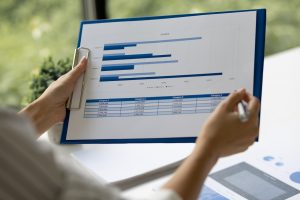Building a personal finance routine is essential for achieving long-term financial stability and independence. As individuals increasingly recognize the importance of managing their finances effectively, establishing a consistent routine that aligns with personal goals can serve as a strong foundation for financial success. This article explores key components of an effective personal finance routine and offers practical tips for implementation.
Assessing Your Financial Situation
Before creating a personal finance routine, it is crucial to assess your current financial situation. This includes analyzing income sources, expenses, debts, and savings. A comprehensive assessment often reveals spending patterns that might not be immediately apparent. Tools such as budgeting apps or spreadsheets can assist in tracking these figures over time. According to a study by the National Endowment for Financial Education, individuals who regularly assess their finances are more likely to achieve financial goals compared to those who do not.
Setting Clear Financial Goals
Once you have a clear picture of your financial standing, the next step is to define your financial goals. These can range from short-term objectives, such as saving for a vacation, to long-term ambitions like retirement planning or buying a home. Financial experts often recommend creating specific, measurable, achievable, relevant, and time-bound (SMART) goals. For instance, instead of saying, “I want to save money,” a SMART goal could be, “I want to save $5,000 for a down payment on a house within the next two years.”
Creating a Budget
A well-structured budget is the backbone of any effective personal finance routine. It helps you allocate your income towards necessary expenses, savings, and discretionary spending. Taking the time to create a monthly budget can significantly impact your financial health. According to a recent survey by the American Psychological Association, nearly 70% of participants reported feeling more at ease after developing a budget, illustrating the psychological benefits of financial organization.
When constructing your budget, consider using the 50/30/20 rule, which allocates 50% of income to essentials, 30% to discretionary spending, and 20% to savings and debt repayment. This flexible framework can be adjusted based on individual circumstances, ensuring that emergency funds and long-term investments remain a priority.
Regular Monitoring and Adjustments
Financial routines are not meant to be static; they require regular monitoring and adjustments. Set aside time each month to review your budget and financial goals, examining what worked and what didn’t. According to a 2022 onboarding report from Mint, users who regularly update their financial plans are 20% more likely to exceed their savings goals. This regular engagement with your finances encourages accountability and helps identify areas where improvements can be made.
When adjustments are necessary—whether due to changes in income, lifestyle, or unexpected expenses—be flexible and willing to recalibrate. This responsiveness is key to maintaining a sustainable personal finance routine.
Utilizing Financial Tools and Resources
In an era marked by digital advancements, numerous financial tools and resources are available to assist individuals in managing their finances effectively. Budgeting apps like YNAB (You Need a Budget) and Mint offer user-friendly interfaces that simplify the tracking of income and expenses. Additionally, platforms like Personal Capital provide valuable insights into investment portfolios and retirement planning.
According to a report by the Financial Technology Association, 73% of users indicated that financial technology tools have helped them achieve their personal finance objectives. Employing these resources can enhance financial literacy, making it easier to develop and sustain a personal finance routine.
Expert Opinion
Renowned financial planner, Laura Adams, emphasizes the significance of consistency in personal finance routines. “The key to financial wellness is not just about being knowledgeable; it’s about translating that knowledge into regular habits,” Adams states. She suggests individuals incorporate a weekly review session into their routine, focusing on spending habits and areas for growth.
What’s Next?
The trajectory of personal finance routines underscores the necessity of adaptability and continuous learning. As life circumstances evolve, so too will your financial needs and goals. Embrace the journey and remain committed to refining your routine over time.
In conclusion, building a sustainable personal finance routine requires a thorough awareness of your financial situation, the setting of clear and actionable goals, diligent budgeting, and regular monitoring. By leveraging modern financial tools and consulting expert insights, individuals can lay the groundwork for long-term financial success. As financial procedures become second nature, the ability to adapt to unforeseen challenges enhances personal resilience, ultimately leading to greater financial freedom and security.








